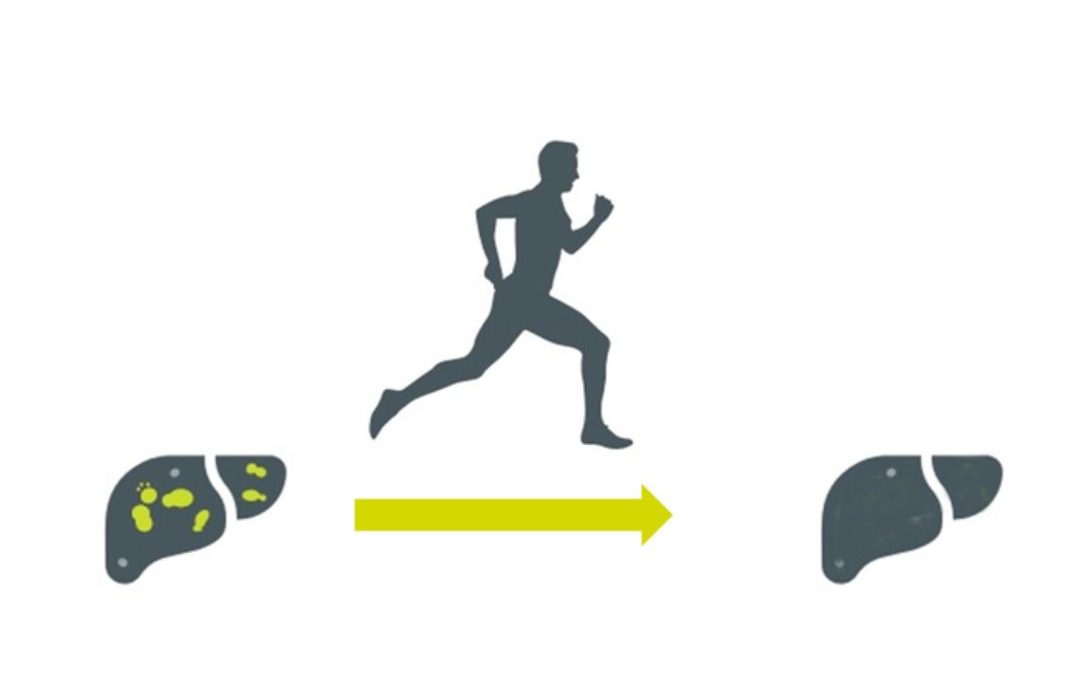[ad_1]
The non-alcoholic fatty liver disease (NAFLD) incidence is escalating, becoming a leading cause of liver cirrhosis and a significant burden of liver-related outcomes. Since there is no pharmacotherapy available to address NAFLD, the most effective solutions seem to be lifestyle changes centered on physical activity.

The 150 minutes of moderate to intense aerobic activity per week that is recommended by the U.S. Department of Health and Human Services can significantly reduce liver fat, according to new research by Penn State College of Medicine researchers. (https://www.psu.edu). The researchers’ primary goal in the study was to examine the association between exercise training and a clinically relevant improvement in liver fat. Independent of weight loss, the team found exercise training was 3 1/2 times more likely to achieve clinically meaningful treatment response (greater than or equal to 30% relative reduction in MRI-measured liver fat) compared to standard clinical care.
150 minutes each week of something like a brisk walk — resulted in a “significant treatment response” compared to just 26% of those who were prescribed a lesser exercise regimen. The researchers note that this 150-minute standard for moderate weekly physical activity (That’s about 30 minutes, five days a week.) is not just the same activity recommended by the American Gastroenterological Association, but also the European Association for the Study of the Liver.
In general, 75 minutes of vigorous activity can give similar health benefits to 150 minutes of moderate activity. Or simply one minute of vigorous is equal to two minutes of moderate activity. Therefore, the more you do, the greater the benefit to your health.
How much exercise should you do?
Adults aged 19 to 64 should try to be active daily and should do:
- At least 150 minutes of moderate aerobic activity such as cycling or fast walking every week, and
- strength exercises on 2 or more days a week that work all the major muscles (legs, hips, back, abdomen, chest, shoulders, and arms).

or
- 75 minutes of vigorous aerobic activity, such as running or a game of singles tennis every week, and
- strength exercises on 2 or more days a week that work all the major muscles (legs, hips, back, abdomen, chest, shoulders, and arms).
or
- A mix of moderate and vigorous aerobic activity every week. For example, two 30-minute runs plus 30 minutes of fast walking equates to 150 minutes of moderate aerobic activity, and
- strength exercises on 2 or more days a week that work all the major muscles (legs, hips, back, abdomen, chest, shoulders, and arms).
One way you can achieve 150 minutes of weekly physical activity is to do 30 minutes 5 days a week.
Tips for Incorporating Physical Activity Into Your Busy Schedule
“Whatever your age, regular exercise should be part of healthy living. If you haven’t been active in a while or if you have a health condition, talk to your doctor before you get started.”
Here are some ideas to get more physical activity into your life:
Turn on some tunes. Put on your favorite lively music and dance like no one’s watching. (You might want to make sure no one’s really watching, depending on your skill level.) Three or four songs are usually about 10 minutes, so you don’t have to watch the clock.

Join the kids outside. Instead of sending the kids or grandkids outside to play, go with them. Play some tag, skip rope, throw a frisbee or just run around like a kid for a while.
Get a dog (or borrow one). Walking or playing with a man’s best friend counts as exercise and it is fun for both of you.
Watch TV from an exercise bike. Can’t miss the latest episode of your favorite show? Instead of being a couch potato, do some pedaling. If you’re just getting started, try pedaling during commercial breaks instead of skipping them or heading for the fridge.
Start a family tradition. Take a walk together a couple of times a week instead of watching a movie or playing a board game.
Make it a date. Instead of meeting for dinner, coffee, or drinks, do some hiking, go ballroom dancing, or play a game of tennis or racquetball.
Ref: https://www.nhsinform.scot/
Disclaimer
The Content is not intended to be a substitute for professional medical advice, diagnosis, or treatment. Always seek the advice of your physician or other qualified health provider with any questions you may have regarding a medical condition.
[ad_2]
Source link

Hi! I’m a dedicated health blogger sharing valuable insights, natural remedies, and the latest scientific breakthroughs to help readers lead healthier lives. With a holistic approach to wellness, I empower individuals with accessible and actionable content, debunking myths and offering practical tips for incorporating healthy habits.